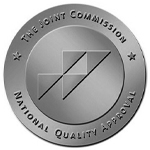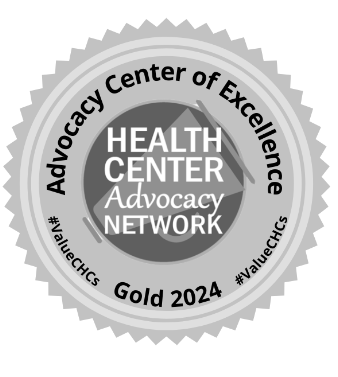
When medications aren’t working for people living with depression, it may feel like relief from their symptoms is out of reach. Fortunately, there are other options. One such option is TMS, or transcranial magnetic stimulation. Dr. Zeeshan Faruqui, Director of Interventional Psychiatry at Keystone Behavioral Health, gives information on this innovative treatment.
TMS
Transcranial magnetic stimulation is a noninvasive treatment for depression that uses magnetic fields to stimulate nerve cells in the brain. TMS is often used when other treatments for depression haven’t worked. This treatment for depression is called repetitive TMS or rTMS because it uses magnetic pulses that are sent out over and over again.
How it works
During a rTMS session, an electromagnetic coil is put against your scalp near your forehead. The electromagnet sends a magnetic pulse that stimulates nerve cells in the part of your brain that controls your mood and is involved in depression. This does not hurt. It is thought to wake up parts of the brain that are less active in people who are depressed.
Repetitive stimulation is used to treat major depression by changing how the cortical regions and neural circuits connected to them work. An alternating current is run through a metal coil that is placed against the scalp. This creates rapidly changing magnetic fields that pass through the skull almost unhindered and cause electric currents that depolarize neurons in a specific area of the surface cortex. Some TMS devices can also stimulate structures deeper in the brain. Repetitive TMS creates a magnetic field that is similar to that of a standard magnetic resonance imaging (MRI) machine (about 1.5 to 3 Tesla). However, the TMS field is focused (under the coil), while the MRI field is large and fills the room where the MRI machine is.
Even though we don’t fully understand how rTMS works biologically, the stimulation seems to change how the brain works, which has been shown to ease depression symptoms and improve mood. There are many ways to do the procedure, and experts may change their methods as they learn more about the best ways to treat patients.
Depression can be treated, but standard treatments don’t always work for everyone. Most of the time, repetitive TMS is used when standard treatments like drugs and talk therapy don’t work. Usually, rTMS is done while the patient is awake and sitting in a chair that reclines. Since no anesthesia is used, patients can drive themselves to and from their appointments, which usually last 30 to 40 minutes.
rTMS is a way to treat depression by stimulating the brain without hurting it. It is not like vagus nerve stimulation or deep brain stimulation in that it doesn’t involve surgery or electrodes being put into the brain. And, unlike electroconvulsive therapy (ECT), rTMS doesn’t cause seizures or require sedation or anesthesia.
Side effects
Most of the time, rTMS is safe and well-tolerated. But it can have some negative effects. Most side effects are mild to moderate, get better quickly after the session, and get less severe as more sessions are done. Some possible side effects are: headache, scalp pain where the stimulation took place, facial muscles that tingle, spasm or twitch and lightheadedness. Your doctor can change the amount of stimulation to ease your symptoms, or he or she may suggest that you take an over-the-counter painkiller before the procedure.
Uncommon side effects
Rarely are side effects severe, but they are possible. People with bipolar disorder are more likely to have seizures and mania, and if you don’t have good ear protection during treatment, there could be some impact on your hearing. No other long-term side effects of rTMS are known.
Before receiving treatment
You will need an evaluation by a psychiatrist to talk about your depression, and some lab tests might be needed. These tests make sure that rTMS is safe and the right choice for you. Tell your mental health provider if:
You are pregnant or are thinking about having a baby, you have tried rTMS before (and discuss your outcome), you’re taking any prescription or nonprescription drugs, herbal supplements, vitamins or other supplements (and how much of each you’re taking), you have had seizures or have a family history, you have other problems with your mental health such as drug abuse, bipolar disorder or psychosis, you have brain damage from something like a brain tumor, a stroke or a traumatic brain injury, you get frequent or severe headaches, and any other health problems you may have.
People who have metal or medical devices in their body will need to talk to the TMS provider as they may not be able to receive the treatment due to the strong magnetic field it creates. rTMS can sometimes still be an option, but the procedure is not recommended for some people who have: aneurysm clips or coils, stents, stimulators including deep brain or vagus nerve stimulators, electrical implants such as pacemakers and medication pumps, electrodes to track how the brain works, cochlear implants, bullet fragments and any other metal or magnetic devices or objects.
Maintenance treatment
For patients with unipolar major depression who respond to TMS and are at risk for a relapse, it is reasonable to use TMS for maintenance treatment. TMS is usually given along with antidepressants, but it can also be used as the only treatment. Maintenance TMS usually uses the same stimulation settings as the initial treatment, unless side effects make it necessary to change them. But there is no standard for how often maintenance TMS sessions should happen, or if one schedule is better than another.
The most common maintenance TMS schedule seems to be one in which the number of sessions is gradually reduced over several months. Many clinicians decide on the schedule based on how the patient responds.
Treatment schedules are being studied and we will learn more over time. One schedule option is daily treatments being cut from five to three in the first week of maintenance treatment, two in the second week, and one in the third week. After four weeks of one session a week, the schedule changes to two sessions a month for two months, then to one session a month. The number of sessions could be increased or decreased based on how well the patient was doing. Another schedule being studied is five sessions over three days every month.
There are no formal recommendations yet as to how long maintenance TMS should be given. In different studies, the length of time has been anywhere from about six months to six years. Based on indirect evidence from studies of maintenance pharmacotherapy, patients with unipolar major depression who are likely to have major depressive episodes again are good candidates for maintenance TMS that lasts at least one year and up to three years.
If you are interested in TMS therapy, talk to your healthcare provider. Our team members at Keystone Behavioral Health are also happy to answer any questions you may have. Call or text us at 717-709-7930 for more information.
To read what Keystone Health patients are saying about their experiences with TMS, click here.
This article contains general information only and should not be used as a substitute for professional diagnosis, treatment or care by a qualified health care provider.




